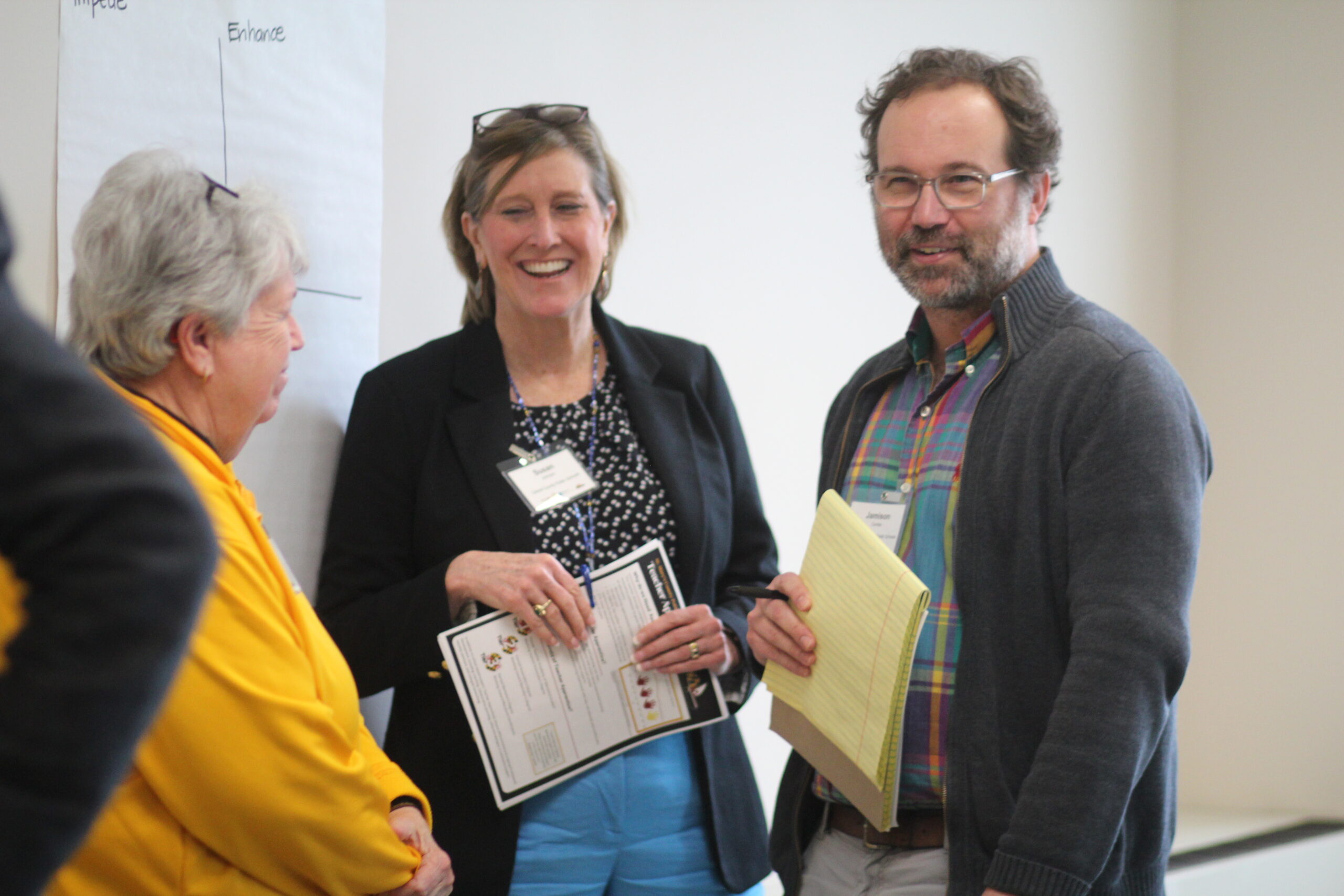
By Austin Delaney
The New Zealand Initiative (NZI), a public policy think tank, has just published Teaching stars: Transforming the teaching profession. This is the third report in a series of three, tackling the issues raised in the first report, World Class Education? Why New Zealand must strengthen its teaching profession, and the second report, Around the world: The evolution of teaching as a profession. These reports investigate the main issues in international attempts to develop effective teaching, raise student achievement and foster a top-performing teaching profession. Key messages from these reports are:
- Make teaching a high status profession, with characteristics and reputation equivalent to top-ranking professions;
- Ensure selective and rigorous teacher education so that high performing students become teachers;
- Develop a career ladder for teachers which recognizes, rewards and retains talented and effective teachers; and
- Facilitate teacher professional development and collaboration to improve student learning outcomes by using top-performing teachers as educators and role models.
- New Zealand’s Education Challenges
New Zealand saw a significant drop in the PISA scores of their students on the most recent PISA test. Between 2009 and 2012, New Zealand dropped from 13th to 23rd in mathematics, from 7th to 18th in science and from 7th to 13th in reading. Furthermore, New Zealand has one of the highest PISA social inequality gaps, attributed to the country’s high level of income inequality, strong performance at the higher levels of PISA and the significant achievement gap between Māori and Pasifika (indigenous) students and the other students, generally of European and Asian origins. Teachers in New Zealand have expressed a number of concerns about the low social status of the job, the limited trust in teachers, lack of rewards for effective or innovative teaching and rare opportunities for professional development and collaboration.
Professionalizing Teaching
To alleviate these emerging problems in the education system, the New Zealand Initiative (NZI) argues that the country needs to learn the lessons from the top-performing education systems by turning teaching into a highly respected profession. Transforming teaching into a true profession can be facilitated by an institution acting as a professional voice for teachers, as seen in a number of countries. Australia has the Institute for Teaching and School Leadership (AITSL), Singapore has the Teachers Network and there is a proposed Royal College of Teaching in the United Kingdom. These institutes develop the standards, training, assessment mechanisms and outcomes for the teaching profession and contribute to improving the instructional quality of the education system.
In New Zealand, the New Zealand Teachers Council currently serves this purpose. The Council is the professional and regulatory body for teachers, an autonomous entity whose governing board is appointed by the government, trade unions and teachers. As the NZI reports point out, the New Zealand Teachers Council is responsible for initial teacher education, regulating the qualification standards, the entry standards into teaching, the certification of teaching, and dealing with competence and conduct issues.
However, the NZI reports find that the Council has difficulties in providing leadership to the profession and strengthening the profession, particularly in competence and discipline issues. The Council has not paid sufficient attention to moving work processes, procedures and the culture of teaching to a professional model in terms of selective entry, high-quality professional preparation programs, career-long professional development, and professional codes of practice. Therefore, the government is set to replace the Teachers Council with the Education Council of Aotearoa New Zealand (EDUCANZ). The NZI report stresses the need for the governing board of EDUCANZ to be more independent of the government than the Teachers Council. This could facilitate EDUCANZ’s proposed work in developing the quality of teaching and educational leadership, strengthening high professional standards and the regulatory framework, overseeing the certification of initial teacher education and researching international best practices.
Attracting the Top Candidates to Teaching
In New Zealand, the selection of candidates into initial teacher education is the responsibility of the education providers (specialized training institutions and universities). These institutions have the autonomy to choose their students as the selection process is not regulated. However, there are two basic requirements: candidates must have a New Zealand University Entrance qualification and fluency in English. In addition to this legal requirement, these institutions generally examine past academic performance, personal qualities, communication skills and prior experiences working with children.
The NZI argues that the selection processes are insufficiently rigorous as too few top-performing students are entering the teaching profession. Based on the experiences in the top-performing countries, the reports recommend significant changes to the selection process for teacher training. The process should incorporate interviews to identify if the candidates have the right competencies, attributes and attitudes for teaching and to facilitate student learning. The research finds that formal interviews discourage applicants with a lack of commitment and a limited skill set from entering initial teacher education. The process should identify the candidate’s levels of motivation, social engagement, and content knowledge to promote excellent teaching and teacher leadership.
NZ TeacherImproving Teacher Education and Induction Programs
Today in New Zealand, individuals interested in becoming a teacher must have a bachelor’s degree in education or a one-year graduate diploma of teaching, if they have a BA in a specialized subject. Initial teacher education is spread across 27 accredited providers and there are more than 85 different qualifications offered. This diverse teacher education system may make it difficult to develop a coherent model of teacher preparation aligned to improving student learning outcomes. Initial teacher education in New Zealand is mainly concentrated in teacher training schools that are part of universities. In the past, initial teacher education was taught in separate specialized teacher training institutions.
The change to university-based teacher education builds a bridge in the theory-practice nexus, supports pedagogical learning, enhances the status of teaching and follows good-practice examples in Germany, Finland and Singapore. However, the change to university-based education in New Zealand reduced the time designated for classroom-based learning for the teacher candidates. The NZI reports see this as a weakness of the new university-based teacher education system as it limits teacher students’ practical knowledge of teaching in classes and schools. The reports point out how classroom-based training is critically important to developing effective teaching. The reports also identify the need for stronger subject matter expertise, significant pedagogical training, including classroom management training, and supervised classroom-based learning.
After initial teacher training is complete, teachers in New Zealand participate in a two-year induction and mentoring program. These beginning teachers are mentored by experienced teachers. The NZI reports find that the quality of the programs varies significantly. The report recommends that induction and mentoring programs are more effective when they are incorporated into a professional learning community in the school. Research in New Zealand finds that beginning teachers who are well supported tend to work in environments where induction is part of a wider system of teacher professional development. The report also recommends induction and mentoring programs focus on the subject-specific pedagogical strategies for beginning teachers to foster student learning.
Developing Career Ladders for Teachers
Teacher salaries in New Zealand are competitive, above the New Zealand average. The average salary for a secondary school teacher in 2010 was $54,000 (US dollars) whereas New Zealand GDP per capita is slightly less than $30,000 (US dollars). This high average salary should attract top-performing students to the field of teaching. However, the NZI reports find the flat structure of teacher wages and limited career progression have generated significant difficulties in attracting top-performing students into teaching. Career progression is generally from teacher to subject head to deputy principal to principal with limited opportunities to pursue new career avenues. Therefore, top-performing teachers are more likely to leave the profession if their salaries and responsibilities are not increasing at a rate comparable to those in other professions.
Top-performing education systems have developed rigorous career ladder structures to promote continuous teacher professional development, differentiate roles and responsibilities and provide expanding opportunities on the job. Shanghai, the top-performer in PISA tests, has a teacher career ladder system with 13 levels, from apprentice teacher, up to research teacher and into the Ministry of Education. Promotion up the career ladder depends on professional evaluation of teaching, engagement in professional development, mentorship of beginning teachers and teaching research. Teachers seeking promotion are also strongly encouraged to teach in schools in low-income areas. The strong connection between teacher professional development and collaboration and promotion up the career ladder is a key feature of the system and contributes to improved student performance.
The New Zealand government recently introduced new career ladders for primary school teachers and for secondary school teachers and principals, similar to the career ladder system in Shanghai. At the primary level, there will be a new teaching category, classroom expertise teacher, and at the secondary level there will be four new categories: lead teacher, expert teacher, executive principal and change principal positions. Lead teachers will be role models, their classrooms will be open for other teachers to learn from their practice, and expert teachers will work inside classrooms with teachers to improve teaching practice. Executive principals will work with approximately ten schools, on average, and mentor their principals, whereas change principals will guide principals in struggling schools.
Expanding Professional Learning Opportunities
In New Zealand, continuing professional development or Professional Learning Development (PLD) is part of the process of teachers renewing their license. Teachers renew their “registration certificate” every three years, limiting the incentive to seriously engage in continuous professional development. Recently, the government has made significant changes to professional development, giving more autonomy to schools to develop their PLD plans and focusing PLD on improving student learning especially for minority groups.
The NZI reports highlight the need for further reforms in New Zealand and make suggestions for how those reforms can take place based, in part, on examples from the top-performing education systems. NZI recommends the need for a paradigm shift in teacher professional development for practicing teachers, moving from teachers simply acquiring new knowledge to changing teaching habits. A key part of this new approach is the fostering of professional learning communities between teachers, schools and other networks of educators. Additionally NZI strongly recommends the improvement of teacher induction systems to encourage more practical training inside classrooms and better recruiting practices to encourage more top-performing students to enter the profession.




